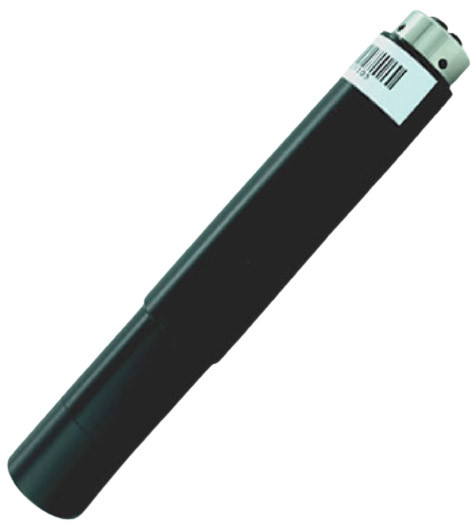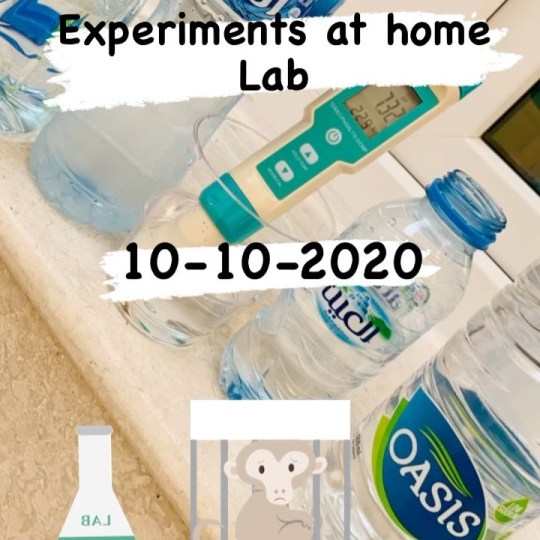#WaterChemistry
Text
Unlock New Insights into Water Chemistry with the KWS500 ORP Probe

Discover the cutting-edge solution that will revolutionize your understanding of water chemistry - introducing the KWS500 ORP Probe from KC Sensor! This state-of-the-art device is designed to provide you with unprecedented insights into the intricate world of oxidation-reduction potential (ORP) measurement in water.
Explore the Depths of Water Chemistry:
With the KWS500 ORP Probe, you'll delve into the depths of water chemistry like never before. Whether you're a researcher, scientist, or water treatment professional, this advanced probe will empower you to unlock valuable insights that can enhance your work and decision-making processes.
Advanced Technology for Precise Measurements:
Featuring cutting-edge sensor technology, the KWS500 ORP Probe ensures accurate and reliable measurements every time. Its high-quality materials and construction guarantee long-lasting performance, even in challenging water environments. Trust in its precision to deliver the results you need.
Versatile and User-Friendly Design:
Designed with versatility in mind, the KWS500 ORP Probe can be easily integrated into various water systems, including pools, aquariums, wastewater treatment plants, and industrial processes. Its user-friendly design ensures hassle-free installation and operation, allowing you to focus on what matters most: gaining insights into water chemistry.
Unleash New Possibilities:
With the KWS500 ORP Probe, you'll unlock a world of possibilities. Monitor water quality, optimize chemical dosing, identify contamination sources, and track the effectiveness of your treatment processes. Maximize efficiency, minimize risks, and make informed decisions backed by reliable data.
Seamless Integration and Connectivity:
The KWS500 ORP Probe seamlessly integrates with your existing data acquisition systems, enabling real-time monitoring and remote access to your water chemistry measurements. Stay connected and in control, even when you're away from the site. The power of information is at your fingertips.
Explore More:
Visit our website at https://www.kcsensor.com/product/kws500-orp-probe/ to learn more about the KWS500 ORP Probe. Discover its features, specifications, and applications, and see how it can transform your understanding of water chemistry.
Unlock New Insights Today:
Don't miss the opportunity to unlock new insights into water chemistry. Invest in the KWS500 ORP Probe from KC Sensor and take your research, water treatment, or industrial processes to the next level. Trust in our expertise and cutting-edge technology to deliver accurate and reliable results. Order your KWS500 ORP Probe now and dive into a world of endless possibilities!
#WaterChemistry#KWS500#ORPProbe#ChemicalAnalysis#WaterQuality#EnvironmentalMonitoring#WaterMonitoring#AnalyticalInstruments#WaterTreatment
0 notes
Text
How to Deal with Chloramines in Your Pool: Weekly Pool Service
Chloramines are a typical problem that can occur in swimming pools and are created when organic waste injected by swimmers, such as perspiration and urine, combines with chlorine in the pool water. Numerous adverse reactions, such as eye irritation, skin rashes, and respiratory issues, can be brought on by chloramines.
It's crucial to take proactive measures to stop the creation of chloramines before you have a problem with them in your pool. Maintaining proper water chemistry by routinely measuring the pH and chlorine levels and modifying them as necessary is one efficient strategy. To lessen the amount of organic matter added to the water, it's a good idea to encourage swimmers to take a shower before entering the pool.
You can use shock treatment to solve the problem if you do detect chloramines in your pool's water. This entails putting a lot of chlorine in the pool quickly, which can aid in breaking down the chloramines and regaining the water's purity and clarity. You can ensure that your pool is a fun and safe place for all swimmers by weekly pool service.
#poolmaintenance#chloramines#swimmingpools#waterchemistry#shocktreatment#poolcare#pooltiles#pool tile cleaner#swimmingpool#arizonapoolservice#gilbertpoolman#pool tile replacement#poolcleaner#pooltilerepair
0 notes
Text
*UPDATE* Swim Bladder Disorder in Fancy Goldfish: Focusing on Negative Buoyancy Disorder - An Experiment Part 1
My first blog focused on Swim Bladder Disorder in Fancy Goldfish, where I talked about Positive and Negative buoyancy disorder. I’m constantly learning new things about buoyancy disorder in goldfish and would like to share something that I have been trying for my male Oranda, who has negative buoyancy issues.
My male Oranda, Zulu, will be turning 3 on May 11, 2022, like my other previous fish, he is another fish that has swim bladder disorder.
Unlike my other two fish, Zulu has negative buoyancy disorder. He is seen bottom sitting at the tank for most of the time, his swimming is very awkward and he’s seen moving his body or swimming on his side to get around. He’s been going through this ever since he’s turned 2 years old, so a year and change now.
Also, unlike my other two fish, Zulu is special needs. He has a very weird appetite ( sometimes he wants to eat a lot, sometimes he eats a little), he’s a little slow when it comes to finding food too (poor baby XD), he’s a runt/stunted fish ( PetSmart's fault for this happening), and gets sick very easily ( well he used too)
I have upped my care ALOT for him for the betterment of his health, but the thing that has been a constant battle for him has been his buoyancy issues. At one point, I was going to give up and just leave him be, for I didn’t know what else to do, but then I decided to do a little more research.
In another blog that I have written, Let’s talk about the Wonder shell, I have recently purchased some and started messing with my water parameters more to try to see if I could tackle one more thing that has been a struggle to maintain in my tank, my GH parameters. I live in a state that is full of clay. Clay leaves NO MINERALS in your tap water, hence GH is low, water is acidic, and everything is unstable.
I have read that if you increase your GH ( mineral and hardness) in your water, one of the things it does is lessen stress on the swim bladder.
I decided to give it a try and use the Wonder shells in my tank.
I have tested my tank water daily ( it is going on 12 days now, tomorrow would be day 13 ) and I didn't notice any changes in my tank or in my fish until day 9. For Zulu, changes came on day 10.
For all three of my fish, I noticed that their slime coats have gotten thicker and healthier. When my GH was low, their slime coats were thin and the scales looked more exposed ( my fish are not sick, just observing a physical change), but I noticed the buildup in the slime coat with the addition of minerals.
The water in the tank is so clear it’s ridiculous. XD
Body injuries are healing faster and the overall body, scales, and fins look brighter and darker.
For Zulu, on day 10, he was swimming around like a normal fish. As if he wasn’t going through swim bladder issues at all.
The addition of minerals was decreasing his stress, but then, on DAY 11, I did a water change. After the water change, he went back to the bottom sitting. The mineral change ( or the lack thereof) definitely has something to do with the stress level on his bladder. Before I started this experiment, I also noticed he was acting a little better when the pH/KH lowered, therefore becoming more neutral instead of alkaline.
Here are my water parameters so far:
Nitrates: </= 20 ppm
Nitrites/ Ammonia: 0 ppm
GH: ~150 ppm ( for goldfish 150 is the minimum but the normal range is ~ 200 or more)
pH: 7.2 - 7.4
KH: 80 ppm
Chlorine: 0 mg / L
I also use a TDS meter:
325 ppm
691 uS/cm
22.4*C / 72.5*F
I am going to continue testing my water daily along with recording more or any changes that are happening. All my fish are benefiting from the wonder shells, but I want to note the consistency of it.
#goldfish#goldfishkeeper#fishkeeper#fishkeeping#swimbladder#fishblr#science#research#tumblr blog#blogger#animal blog#petblog#experiment#experimentation#waterchemistry#testing#test results#thought experiment#blog#fish blog#fish lover#fish lady#tumblr#petblr#pet#petfish
2 notes
·
View notes
Photo

Little Experiments at home Lab...! Saturday 10-10-2020 #water #wateranalysis #watersafety #waterislife💧 #waterchemistry #watermicrobiology https://www.instagram.com/p/CGJqinapjsB/?igshid=qt2s80x4ya8p
0 notes
Video
youtube
strong base anion exchanger
0 notes
Text
How Long Do I Have To Wait To Swim After Adding Pool Chemicals?
After Adding pH, Alkalinity and Clarifier
It is recommended to wait at least 20 minutes to an hour after adding water balancing chemicals.
After Adding Calcium Chloride to Raise Calcium Hardness
You should wait 2-4 hours (or one full cycle through the filter) to swim from the moment you use calcium chloride in your pool.
After Shocking Your Pool
It is safe to swim once your chlorine levels reach 5 ppm or lower. Typically a minimum of 24 hours up to a couple of days depending on the type of shock and amount used.
After Adding Muriatic Acid
Muriatic acid can create a hot spot of acid in the water that could potentially burn or irritate your skin. It is best to wait 30 minutes after adding it to your pool.
After Adding Algaecide
We recommend waiting at least 15 minutes to swim after adding algaecide to your swimming pool. Some algaecides are perfectly safe to swim with.
Liquid Chlorine
Depending on how much you have added and the size of your pool, it is generally safe to wait about 4 hours after adding liquid chlorine or until levels reach 5 ppm or lower.
After adding chemicals, it is always best to retest the water first before swimming. Always follow label directions for each product and follow the equipment instruction guidelines from the manufacturer.
0 notes
Photo

that awkward moment when the moon lights up the solar field. #workgrind #solorpower #waterchemistry (at Nipton, California)
0 notes